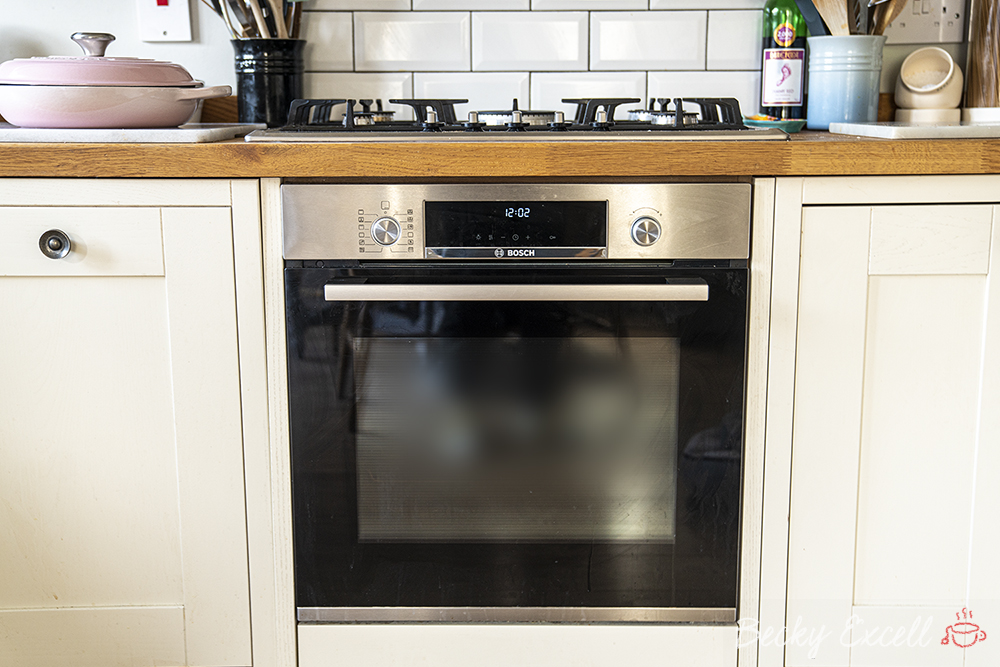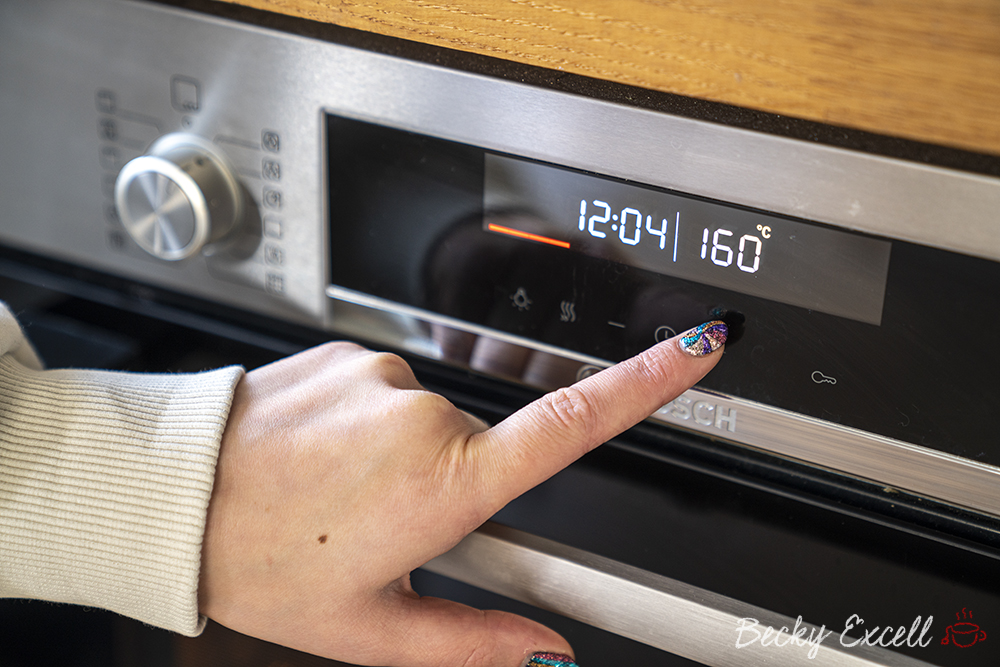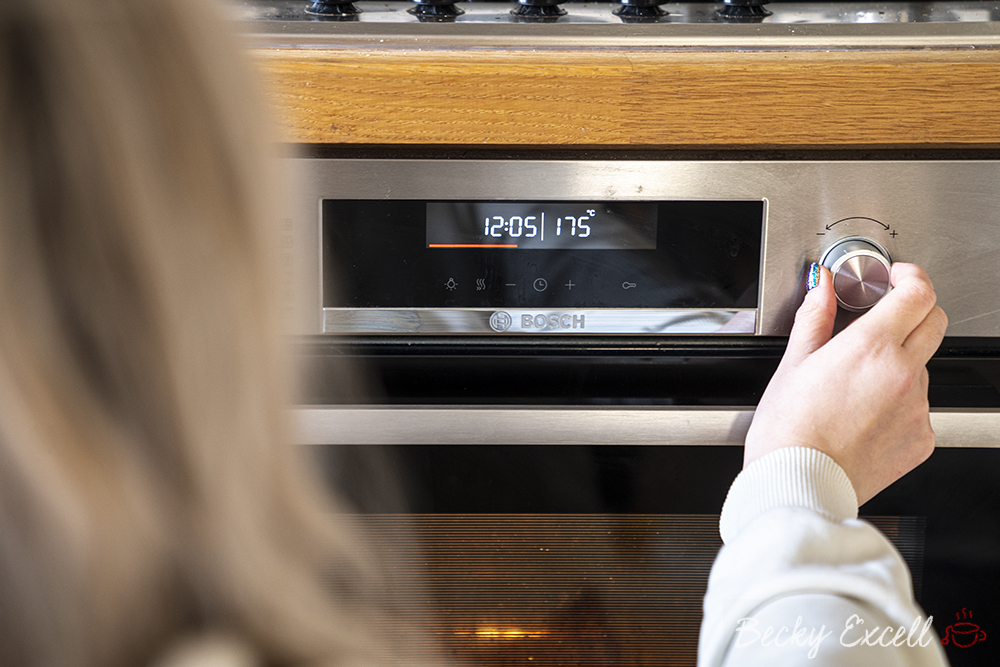Oven temperature conversion guide: complete with a handy calculator so that you can easily convert temperatures from Celsius to Fahrenheit and vice versa.
Oven temperature conversion guide – it’s easy to follow using the table below, or by simply putting in your temperature into the calculator below.

When it comes to baking, for me, it’s all about precision. So when it comes to converting your oven temperature from Celsius to Fahrenheit, that’s exactly what this table is for! I’ve also added figures just in case you have a fan-assisted oven and needed confirmation, as well as those for gas mark ovens too.
Feel free to refer to this table whenever following one of my recipes, which are generally all in Celsius. Make sure you bookmark this page so you always have it to hand.
Prefer an oven temperature calculator? Just keep scrolling past the table!
Oven temperature conversion guide: The Table
| °C | °C (fan-assisted oven) | °F | Gas Mark |
| 100 | 80 | 210 | – |
| 110 | 90 | 230 | ¼ |
| 120 | 100 | 250 | ½ |
| 130 | 110 | 265 | ¾ |
| 140 | 120 | 285 | 1 |
| 150 | 130 | 300 | 2 |
| 160 | 140 | 320 | 3 |
| 170 | 150 | 340 | 3 ½ |
| 180 | 160 | 355 | 4 |
| 190 | 170 | 375 | 5 |
| 200 | 180 | 390 | 6 |
| 210 | 190 | 410 | 6 ½ |
| 220 | 200 | 425 | 7 |
| 230 | 210 | 445 | 8 |
| 240 | 220 | 465 | 9 |

Though a table is an instant visual tool that’s instantly helpful, sometimes you just can’t beat an oven temperature conversion calculator.
This can especially come in handy if the temperature that you’re trying to convert is in between the figures listed above. For example: if you needed to convert 135°C to Fahrenheit.
So simply input the figures you wish to convert below and you’ll get an exact, precise answer.
Oven Temperature Conversion guide: The Celsius/Fahrenheit Calculator

A Note on Different Ovens
Now you’ve got my oven temperature conversion guide and calculator in your back pocket, here’s a few tips on getting to know your own personal oven.
All ovens often have their own quirks, which is why it’s so important to get to know your own personal oven. And the best way to do that, is by using it a lot!
Here’s a few things you should bear in mind when getting to know a new oven:
Does your oven need longer to preheat than the indicator light lets on?
I’ve found that my oven needs an extra 5-10 minutes (after the oven indicates it’s finished preheating) before the middle of the oven actually reaches the desired temperature. I tested this using an oven thermometer and I’m so glad I did – this information is vital if aiming to bake with precision.
Is the back of the oven hotter than the front?
That’s certainly the case with my oven, where baking a tray of muffins will always result in the back row browning more than the front. Knowing this can allow you to take advantage of those hot spots, or avoid them entirely, depending on what you’re baking.
Is the top shelf of the oven hotter than the bottom?
Again, that’s definitely the case in my oven. So if I bake anything, I always go for the middle shelf, to ensure an even bake. If I bake three sponges (one on each shelf) I also bear in mind that the one on top is likely to rise more and be done quicker, with the one on bottom likely to take longer and be less risen.
Does your oven run hotter or colder than other average ovens?
Whilst you obviously can’t go around testing hundreds of ovens, this is definitely something to bear in mind if all your bakes come out underdone or overdone. Your oven may run hotter or colder than your average oven, meaning you likely need to compensate for that – of course, this comes from experience of baking a lot and having tried a lot of recipes!
Ready to bake?
If you’ve got all the answers you need, I’d really appreciate it if you came over to my Instagram and hit the follow button. I post delicious bakes almost every day, so if that’s your thing, come and say hi!
If you’re ready to dive right into baking, make sure you check out all my baking recipes first. I’m sure you’ll find something you like!
Thanks for reading,
Becky x

